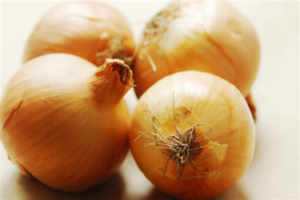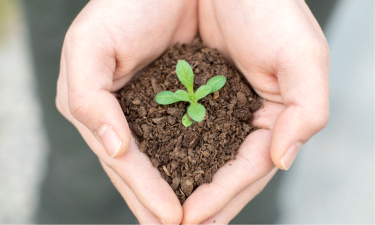
Soil Health a comprehensive beginners guide to better yield!
Soil happens to be a very fundamental terrestrial asset, not to mention, the sturdy base of every garden.
Along with water and sunlight, soil helps to provide the basis of all biodiversity around us and all terrestrial life.
While the terms soil health and soil quality can always be used interchangeably, in this particular article, soil health is more applicable.
To start with, soil health refers to the status or condition of the soil in a particular location and environment as compared to the standard benchmark conditions.
That being the case, soil health is the continued capability of the soil to play a key role in the sustainability of humans, plants and animals in the ecosystem.
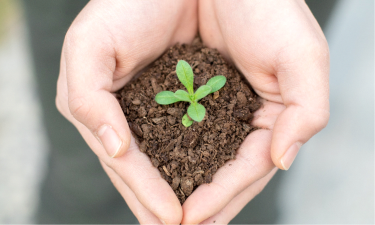
Healthy soil
However, the entire concept of soil health could vary from time to time.
This is due to the priorities that are placed on various soil functions.
Therefore, the concept of soil health needs to be understood depending on the intention of the user and within the specific concept.
That aside, this article will cover everything you’d love to know about soil health. Shall we get started?
How to Improve Soil Health?
More often than not, you will find growers asking ‘what’s wrong with my crop?’
This is to mean that anytime the production rate is lower than expected, they tend to think that they are experiencing individual production issues.
However, in some cases, it’s could just be the symptoms of poor quality and highly degraded soil.
But there is no need to panic if your soil has lost its quality over time.
That is because there are a couple of agricultural practices that you can embrace to improve the situation.
The good thing with these practices is that they work to prevent any symptoms associated with the soil losing its quality than just reacting after the issues have developed.
⦁ Reducing Soil Traffic and Inversion Tillage
Tiling your land excessively has adverse negative effects to your soil.
The excessive tillage increases the availability of oxygen in the soil hence increasing microbial activity in the soil.
In the end, this results in decomposition of the organic matter.
More to that, excess tillage disrupts the soil aggregates which then exposes organic matter that had been protected within the soil aggregates to microbial consumption.
The worst thing is that; if adding organic matter doesn’t make the situation any better then the levels of organic matter will decline over time hence reducing the soil health.
On the same note, inversion tillage reduces the soil coverage that is provided by the crop residues.
In the long run, this makes the soil in your garden to be more exposed to erosion.
In addition to that, tillage tends to affect the network of mycorrhizal fungi which can lead to their decline over time.
That is why, when you don’t manage tillage inversion it can end up compacting the subsoil.
This then leads to restriction of the growth of the roots as well as their access to water and nutrients from the subsoil.
Also, excessive foot and wheel traffic on the soil surface can compact it which can then impend root growth and macro porosity.
At the same time, not forgetting that excessive physical disturbances caused by soil tillage have a great effect on the properties of the soil.
The removal of surface residue only makes the soil have less moisture and disrupts the dwelling place for soil organisms.
That is why no inversion is a better option than inversion tillage.
That is because there is less disturbance of the soil which means there is less mortality of the beneficial organisms in the soil.
However, you need to understand that in some cases some tillage is still very necessary.
Especially in organic farming production where gardeners don’t use herbicides for weed controls.
All in all, when tillage is involved it’s great to offset the high rate of organic matter decomposition by increasing the input of manure, compost and crop residues.
Without a doubt, this will help to reduce the effects of inversion tillage over time.
Soil Management
⦁ Increasing the Input of Organic Matter
For you to be able to maintain the levels of organic matter in your garden, properly the input must exceed or meet the losses of the organic matter, that occurred during decomposition.
Having healthy plants in your garden is a great source of organic matter.
Hence, the crop residues should be returned to the soil as much as possible.

On the left, fresh organic fertilizer while on the right is a heap of mature organic fertilizerAttribution: SuSanA Secretariat [CC BY 2.0 (https://creativecommons.org/licenses/by/2.0)]
In addition to that, having cover crops and perennial crops as well as animal compost is another great way of increasing and maintaining the organic matter components in the soil.
You can also monitor your soil health over time by requesting analysis for organic matter content when submitting your samples to be tested for soil fertility.
⦁ Crop rotation
Having diverse crop rotation helps to break up the soil-borne pest and disease cycle in your garden hence improving the health of your crops.
More to that, crop rotation helps with management of weeds in your garden.
In that, when you grow diverse crops on a particular space over time the pests that might be attacking a particular crop will not be able to thrive over time.
Hence, they will not be able to build their populations. At the same time, crop rotations help to reduce excess nutrients in the soil.
⦁ Planting Cover Crops
As we have already seen above, cover crops have more than one thing to contribute to your soil health.
To start with, cover crops help to protect the soil when the soil is not in use and no plants are growing.
This helps to reduce any risks of soil erosion.
At the same time, the biomass we get from the soil cover crops is usually returned to the soil.
This helps to enhance the levels of organic matter over time.
And this is even better when you have cover crops that have taproots.
This type of roots helps to alleviate compaction and create some macro pores too.
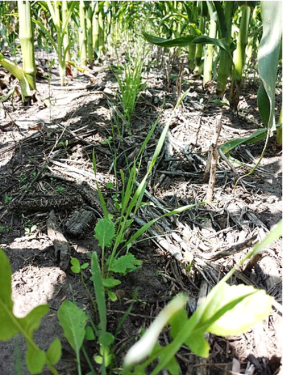
Cover crop at a corn farm
Attribution: USDA NRCS South Dakota [Public domain]
In addition, there are certain cover crops that help to increase and sustain the population of the beneficial fungi.
At the same time, having legume cover crops help to add nitrogen to the soil through nitrogen fixation.
Finally, the cover crops help to curb the leaching of nutrients. This helps to improve soil health over time.
⦁ Reducing the Use of Pesticides
In the garden, there are beneficial insects that help to contribute to the biological control and pest organisms too.
However, when you use a broad spectrum of pesticides, these beneficial organisms could be harmed.
In that case, you should instead consider farmscape as it is an ecological approach to managing and increasing biodiversity with the hope that in the end, it will increase the occurrence of beneficial organisms.
With the farmscape method, you don’t have to use insecticides to eliminate pest in the garden.
Instead, you use cover crops, hedgerows, insectary plants and water reservoirs in order to attract the beneficial organisms.
Such organisms include birds, amphibians, reptiles, and bats among others that prey on the pests.
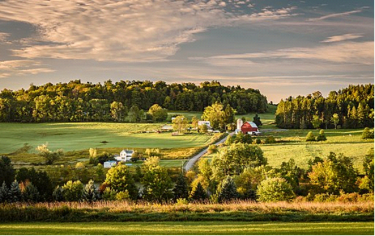
New Milford Farmscape
Attribution: Larry Lamb [CC BY-SA 3.0 (https://creativecommons.org/licenses/by-sa/3.0)]
In addition, you can place the farmscapes in between some steep ditches, fields and places that get erosion easily in order to stabilize the soil.
And the best thing is that the plants used in farmscapes contribute highly to having healthy soil as they add organic matter to the soil.
⦁ Nutrients Management
There is a lot that counts in order to get healthy soil in your garden.
And one of these things is careful planning of the timing, the method used in the application and the quantity of the compost or manure you add to your garden.
These factors help you to reach the nutrients demand of the crop and at the same time be able to minimize any excesses.
The good thing with having healthy plants in your garden is that they are able to fight pest and disease easily.
However, over-fertilization of the soil can also damage the crops.
When the soluble nitrogen levels are too high in the crop that tends to decrease the crop’s resistance to the pest which may lead to crop damage.
By maintaining the correct ph. level for your crops will also go a long way into reducing the toxicity of the soil and making the nutrients more available.
In addition to that, using diverse sources of nutrients can also help to maintain soil health.
Also, combining modest compost additions and manure will help to balance out the nutrient levels in the soil.
In addition to the legume cover crops, you are able to bring a balance between the nitrogen and phosphorus levels in the soil.
Soil Health Indicators
The soil health indicators are the composite set of a wide range of measurable chemical, biological and physical factors that relate to the functional processes of the soil.
These soil health indicators help you to evaluate the status of the soil health.
Depending on how it has been affected by the overall soil health management as well as external factors such as climate.
The soil health indicators could either be quantitative or qualitative. And these indicators should be;
⦁ Interpretable
⦁ Components of already existing database
⦁ Consider climate and management factors
⦁ Accessible to a wide scope of users
⦁ Able to integrate all the chemical, biological and physical properties of the soil
⦁ Able to correlate with the processes of that particular ecosystem
That aside, we have three main soil health indicators which are biological, chemical and physical. Here is a breakdown of what each does;
⦁ Physical Indicators; the physical factors help you to get the information about the hydrologic properties of the soil. This includes water retention and entry that determines the water availability to plants.
Rooting volume and aeration status determine the nutrient availability to plants. There are also some other measures that tell about the status of erosion in the plants. Here we look at the soil crust, bulk density, the soil structure among other factors.
⦁ Chemical Indicators; these give you the needed information on the equilibrium of the soil solution in that; soil water and the nutrients.
More to that, it indicates the plant health, the nutritional needs of the soil, the levels of contamination in the soil, and the availability of nutrients for uptake by plants and animals.
Here we look at soil ph., the electrical conductivity of the soil, soil nitrate among others.
⦁ Biological Indicators; these give us information about the organisms in the food web that are responsible for decomposition and cycling of nutrients.
Hence the biological indicators give us the numbers of the organisms, it can be individuals or the specific species.
Also, we look at the organisms that perform similar tasks and their niches, and the soil’s resilience and resistance to disturbance.
Here we look at the soil enzymes, respiration, presence of earthworms, organic matter and much more.
What Makes Soil Healthy?
Soil is normally an aggregate of four very basic components that include; organic matter, minerals, water and air.
Hence, whatever determines healthy soil is the amount of each one of these components that is present in the soil.
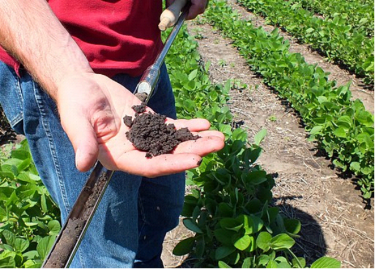
Soybean Field with healthy soil
Attribution: USDA NRCS South Dakota [Public domain]
In that case, we identify soil health by looking at how the soil functions within the ecosystems in order to sustain the production process.
In addition, how it maintains the quality of the environment and promotes the health of both animals and plants.
Some of the characteristics of healthy soil include;
⦁ Proper drainage
⦁ Sufficient depth
⦁ Good tilth of the soil
⦁ Proper nutrient levels
⦁ Resistance to degradation and weeds
⦁ Resilience during tough and unfavourable conditions
⦁ Large colonies of the beneficial organisms
Soil Health Management and Conservation
Achieving as well as maintaining soil health in your garden doesn’t always come easy.
It involves the integration of biological, physical and chemical components that in the end lead to improved quality of the environment and productivity.
To understand the concept of what is required from you in order to achieve healthy soil, you probably need to first understand what is regarded as unhealthy soil.
This is quite easy as the most obvious suggestion of unhealthy soil is seeing poorly growing plants in your garden.
Most of the unhealthy soil is caused by soil compaction, low levels of organic matter and minerals, a lot of pressure from diseases and weeds as well as surface crusting.
However, there are a couple of methods that you can use to measure your soil healthy and even improve it. This includes;
⦁ Disturbing the soil less
⦁ Diversifying the soil Biota by diversifying the plants in your garden
⦁ Using cover crops to protect the soil as much as possible
⦁ Ensuring the land is always planted throughout the year
In Summary…
Well, there you have it. To maintain the health of your soil, you will have to consider various factors. That said, with healthy soil, you will be able to fully utilize your farm. It also ensures we have a healthy and productive environment.


